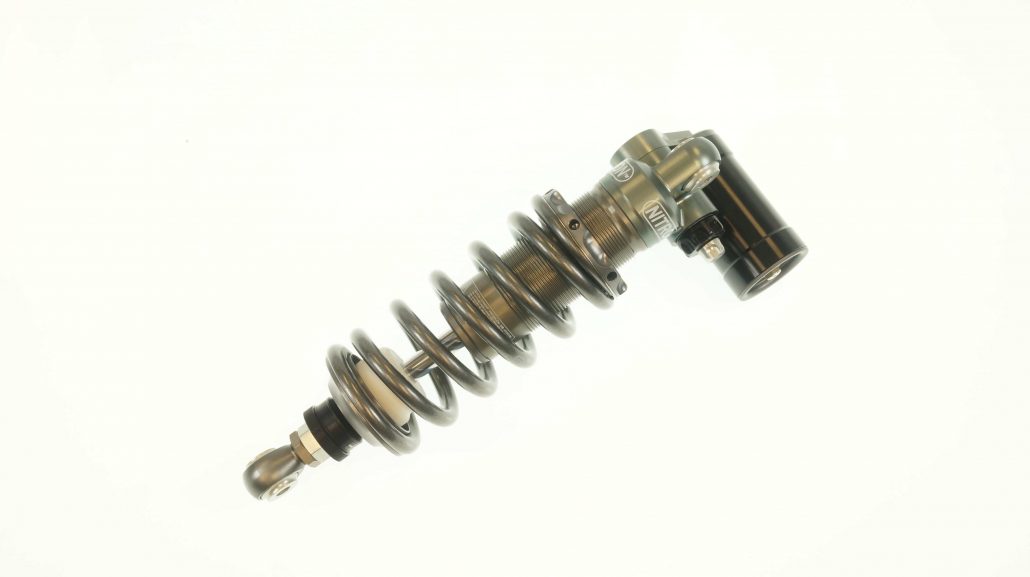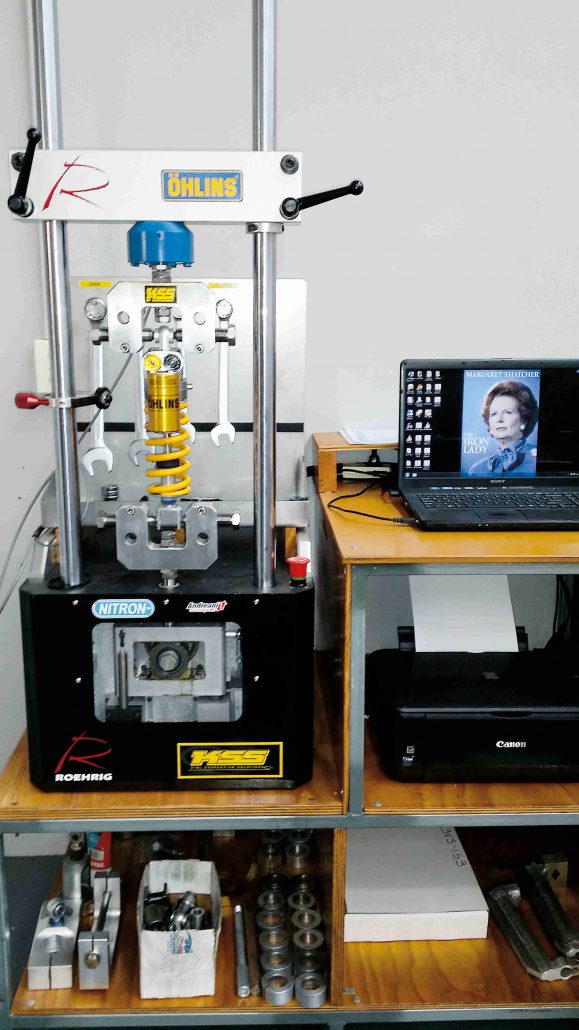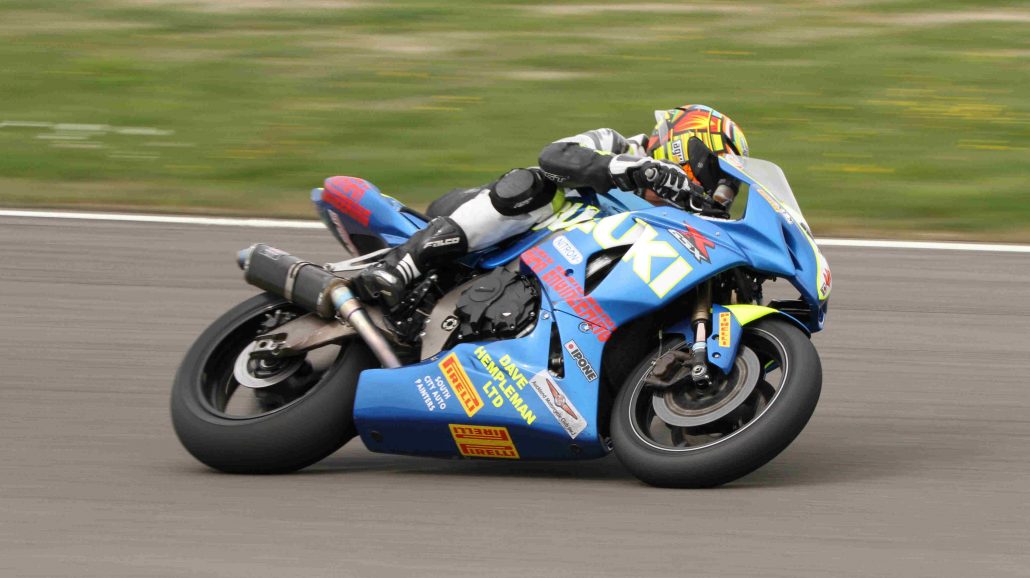The dark art of suspension translated
Words: KSS Photos: Doug Cornes
It’s pretty much universally accepted that most of us don’t really know what’s happening inside our suspension when we twiddle with the adjusters. Sometimes we luck upon a combination that works but really, it ought to be easier than that…
Let’s start with the terms ‘fully-adjustable’, ‘high and low-speed compression’, and the opposite movement, ‘rebound’. What do they mean by high-speed?
Referring to suspension as ‘fully adjustable’ to the likes of KSS’ head honcho, Robert Taylor, his partner in crime, Dennis Shaw or any of the other well-versed technicians within the industry will make you about as popular as breaking wind in a crowded elevator…
Suspension can be multi-adjustable but many OEM units are, at best, slightly adjustable. The better units would class as ‘quite’ adjustable. Some OEM models do take advantage of employing top-shelf items, so that does muddy the waters somewhat.
Firstly, for this article, which is aimed at explaining how the adjusters function, to work, you need to make sure you start with the right spring rate for your bike, your weight, and the application (as in touring, racing, sport riding etc). If your springs are too heavy or too light, you won’t fix it by beating up the clickers. Set ride height with the rider on the bike by adjusting spring preload. Then measure free sag. If unsure of the optimum amount for you, ask someone. (KSS will assist with advice).
A tip for the inexperienced – don’t just Google it and take the advice of anyone with a flash site, there is loads of bad advice available out there. We trialled a few and found the spring rates Jaden Hassan used to win the NZSBK title were at least two full spring rates away from their recommendations. They also had no dyno graphs to prove anything with, so how they arrived at their theories is anyone’s guess.
Hi-Low
 Here’s a massively simplified way of looking at high and low-speed damping adjusters if your suspension is the multi-adjustable breed: High-speed compression adjustment sets the basic character of your forks and shock, so you can set it for different riding conditions, as in hot dry road or track versus wet, cold or even for a bumpy street circuit.
Here’s a massively simplified way of looking at high and low-speed damping adjusters if your suspension is the multi-adjustable breed: High-speed compression adjustment sets the basic character of your forks and shock, so you can set it for different riding conditions, as in hot dry road or track versus wet, cold or even for a bumpy street circuit.
The low-speed compression adjustment tunes the initial chassis response and drive grip, so is not about coping with those big hits where the travel movement is super fast, as in high-speed… follow? That’s what the speeds refer to, how fast the suspension moves.
Rebound adjustment sets the return speed of the suspension, so affects handling stability and also drive grip as it works with low-speed compression to keep the tyre in contact with the surface. The low-speed compression copes with the leading edge of the bump, high speed compression controls the duration, dissipating the force if it’s a decent bump that requires rapid travel movement and the rebound manages following the trailing edge, as in settling back to a neutral stance.
Many aftermarket shocks also have shock length adjustment ton alter steering geometry – longer gives more rear ride height, steepening the front-end, quickening turn-in at a trade of straight line stability.
Same as…
 Not all suspension units with the full set of adjusters are equal – far from it. The really good ones, and there are several brands we consider as such apart from the ones we specialise in, provide a much wider window of real adjustment; as in can be proven on a dyno as well as felt on the bike.
Not all suspension units with the full set of adjusters are equal – far from it. The really good ones, and there are several brands we consider as such apart from the ones we specialise in, provide a much wider window of real adjustment; as in can be proven on a dyno as well as felt on the bike.
The charts shown are from one of our brands and have not only exceptional scope for adjustment but the ‘clicks’ form linear, progressive change and adjusting and have the rare benefit of letting you adjust high-speed compression without it upsetting the low-speed setting. This ability to avoid cross-talking makes it so much easier for the non-technician to deal with.
Keeping It Simple
 So, armed with accurate dyno charts that visibly show what will happen with the clickers on the actual suspension unit you are about to adjust, you can confidently sort your suspension to suit. It doesn’t get much easier than that. And the manufacturers use this same technology when developing their suspension, so it makes perfect sense to use the exact same science when adjusting them to suit you, your bike and the way you like to roll.
So, armed with accurate dyno charts that visibly show what will happen with the clickers on the actual suspension unit you are about to adjust, you can confidently sort your suspension to suit. It doesn’t get much easier than that. And the manufacturers use this same technology when developing their suspension, so it makes perfect sense to use the exact same science when adjusting them to suit you, your bike and the way you like to roll.
Can I Upgrade My OEM Suspension? With your forks, the answer is yes. There are cartridge kits available as well as different spring rates. The cartridge deals with compression and rebound damping, so upgrading is relatively straightforward and inexpensive. Shocks, on the other hand, are not so cut and dried. Most OEM units will never have a fantastic response range or have the changes nice and linear. So even the main piston is revalved, the shock will be better but the scope for adjustmentment is pretty limited. Ineffective adjusters on budget suspension means they often have little effect on high-speed compression control, due to a lack of back-pressure control – that’s why you feel the kick in the kidneys over sharp bumps. To get the best ride quality and road-holding, most budget shocks are best replaced. Mid-range shocks fare better and you may get away with a revalve as a compromise but good quality shocks are a whole new level. You can always put them back on to sell your bike and keep your personalised ones. And they don’t cost as much as most people think either.
With your forks, the answer is yes. There are cartridge kits available as well as different spring rates. The cartridge deals with compression and rebound damping, so upgrading is relatively straightforward and inexpensive. Shocks, on the other hand, are not so cut and dried. Most OEM units will never have a fantastic response range or have the changes nice and linear. So even the main piston is revalved, the shock will be better but the scope for adjustmentment is pretty limited. Ineffective adjusters on budget suspension means they often have little effect on high-speed compression control, due to a lack of back-pressure control – that’s why you feel the kick in the kidneys over sharp bumps. To get the best ride quality and road-holding, most budget shocks are best replaced. Mid-range shocks fare better and you may get away with a revalve as a compromise but good quality shocks are a whole new level. You can always put them back on to sell your bike and keep your personalised ones. And they don’t cost as much as most people think either.















